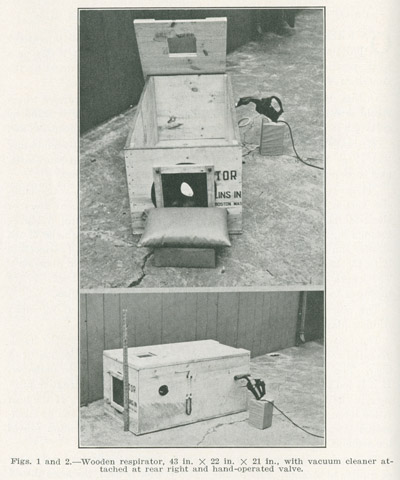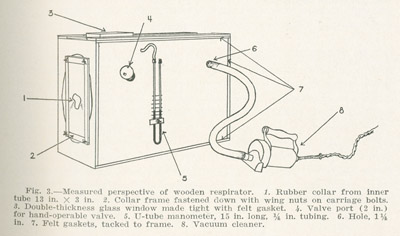Emergency! An Iron Lung in a Hurry
During the height of the polio epidemic years, the iron lung became such a crucial part of treatment that Philip Drinker and Edgar L. Roy offered instructions for building a makeshift emergency respirator for cases of life-threatening paralysis. Although this emergency version of an iron lung was only intended for use until a board-approved version arrived, it was functional enough to save lives.
In contrast to the original, professionally crafted iron lung of 1929, Drinker and Roy employed common household and conveniently available hardware store materials in their emergency respirator. The materials included a car inner tube for a rubber collar, a common vacuum pump to provide pressure, a six-inch square piece of double-thick glass, a piece of sole leather to serve as the valve, a glass U-tube with colored water to show pressure, and several pieces of spruce wood. Drinker and Roy provided detailed construction plans and clearly indicated that it was an emergency respirator that could only accommodate small children and was not meant to replace the standard-size iron lung. Nonetheless, they fully supported its use in emergency situations.22

